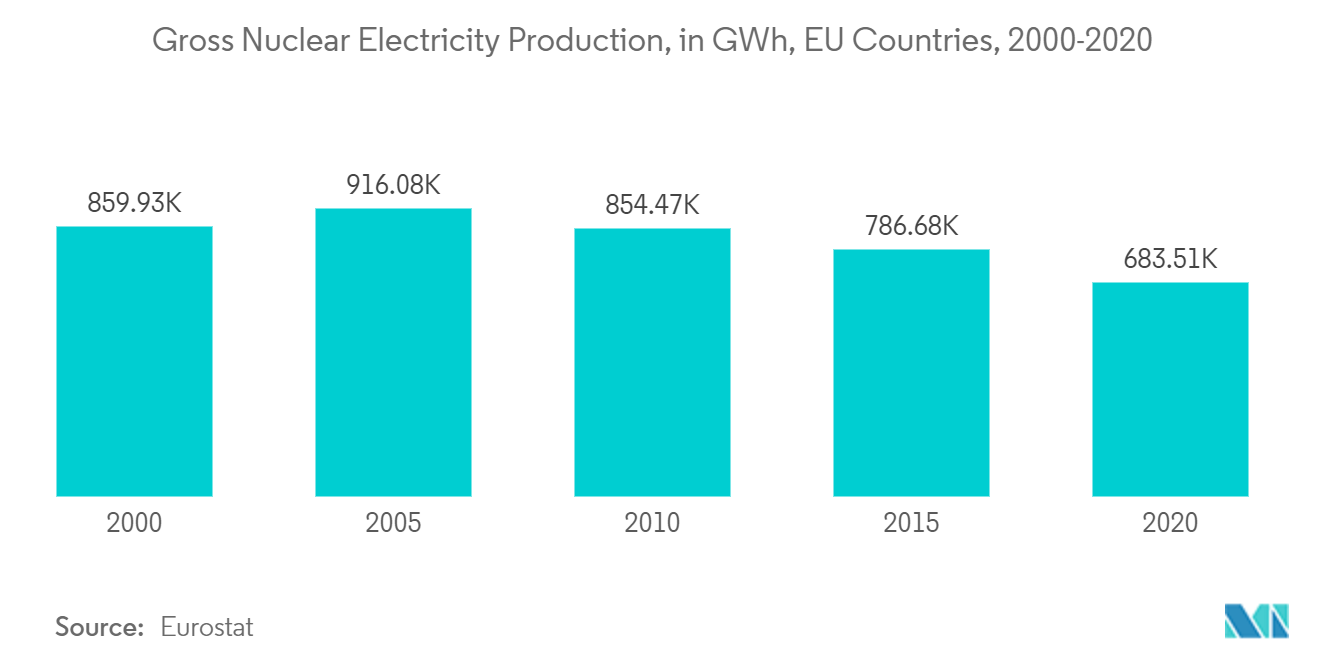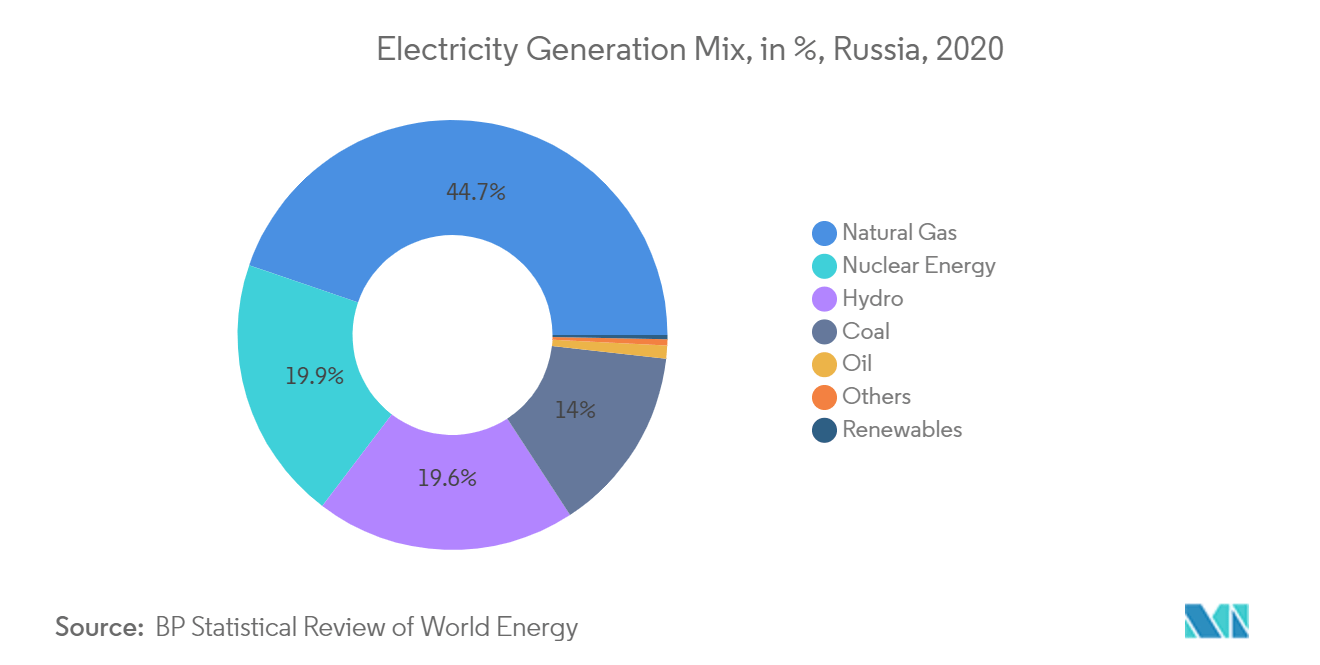Market Trends of Europe Nuclear Power Plant and Equipment Industry
This section covers the major market trends shaping the Europe Nuclear Power Plant & Equipment Market according to our research experts:
Pressurized Water Reactor Type Expected to Dominate the Market
- The typical design of a pressurized water reactor (PWR) is such that the core inside the reactor vessel creates heat. The core or the reactor pressure vessel (RPV) contains nuclear fuel, moderators, control rods, and a coolant that is cooled and moderated by high-pressure liquid water. PWR reactors are low-cost operating reactors, as both the coolant and the moderator used in these reactors are light water, which is cheaper than other kinds of coolants like heavy water.
- The total nuclear power generation capacity in the EU countries was recorded as 6,83,512GWh in 2020. The majority of nuclear power plants operating in the region are PWR type of nuclear reactors, as it is the most mature and cheaper technology available in the region. Many European countries are of the opinion that their goal of carbon neutrality by 2050 cannot be achieved without the growth in nuclear power generation. Thus, it is included in the green taxonomy of such countries. Several new nuclear power projects are planned in the region with the PWR technology to be added to the nuclear capacity.
- As an example, Slovakia, an EU member, is currently on the way to adding two more nuclear reactors at the Mochovce nuclear power plant. The two 471 MWe PWR nuclear reactors will add around 942 MWe of nuclear power capacity to the nation's grid once operational in 2023.
- Furthermore, a number of EU countries have planned the capacity expansion of their already operational power plants with the installation of new PWR reactor units. For instance, in July 2020, the Government of the Czech Republic entered an agreement with the state utility company CEZ for the expansion of the Dukovany nuclear power plant. It is believed that the new reactor unit will be a PWR reactor type which will be installed after the selection of the supplier in 2024.
- Such plans on the part of the European countries are expected to give robust growth to the PWR nuclear reactor type in the region.

Russia Expected to Witness Significant Growth
- Russia is one of those European countries that has a well-developed nuclear power sector. Currently, it has 38 nuclear power reactors in operation and is steadily moving ahead with new plans to expand the role of nuclear energy in the electricity sector. Though the country is behind France in the nuclear power generation capacity, it is expected to surpass the EU country in the coming years with the current pace they are moving.
- The share of nuclear energy in the electricity mix was around 20% in 2020. The latest Federal Target Programme has set a target of 25-30% nuclear share in electricity production by 2030, 45-50% by 2050, and 70-80% by the end of the century. Thus, they have planned many new nuclear reactors in the coming years.
- For example, the new Kursk-II nuclear power plant is currently under-construction. The plant is going to replace the older units with two new VVER-TOI units, Kursk-II-1, and Kursk-II-2, which are expected to be installed by 2023. The reactor vessel for Unit-1 has already been delivered to the construction site.
- Furthermore, in 2020, the state-owned nuclear corporation, Rosatom, announced that it started the preparatory work for Unit-3 and Unit-4 for Leningrad-II nuclear power plant. The two VVER-1200 units will be commissioned by 2027. The project is a part of the government's general plan for installing new electric power generation units by 2035.
- Such developments are expected to put Russia at the forefront of the European nuclear power market.


